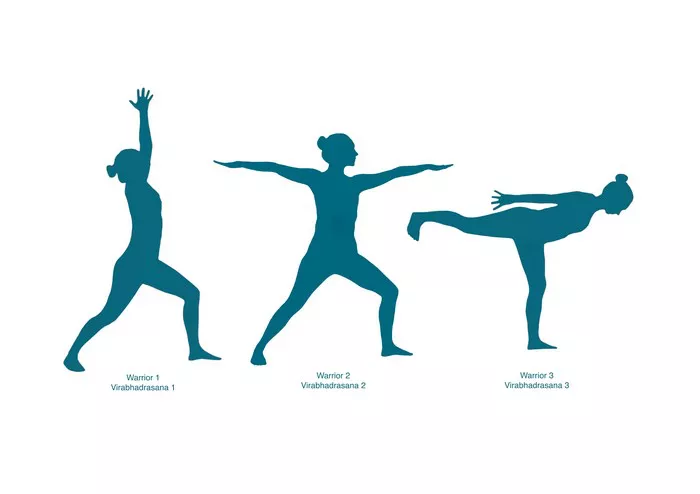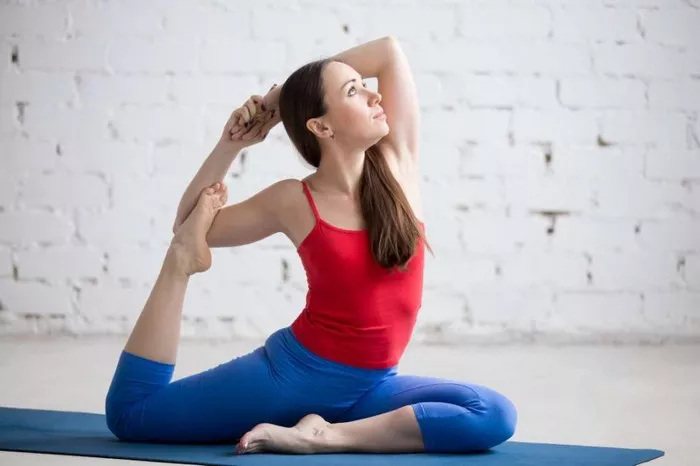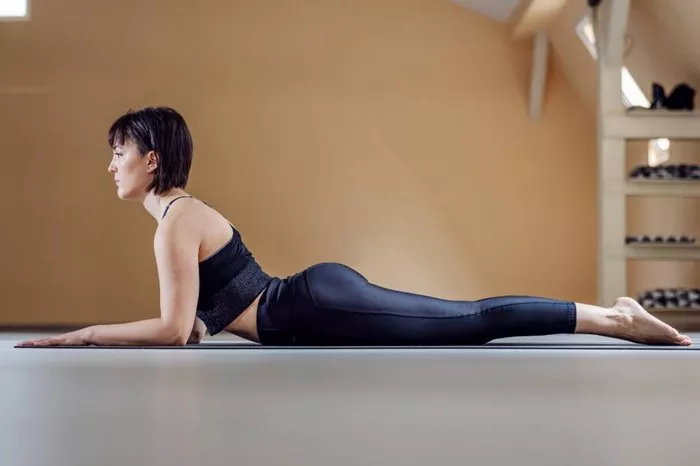Yoga, an ancient practice rooted in mindfulness and physicality, offers a plethora of poses designed to promote strength, flexibility, and balance. Among these poses, the Warrior series stands out for its powerful stance and symbolism. In this article, we delve into the intricacies of the Yoga Warrior Poses 1, 2, and 3, unraveling their techniques, variations, and significance within the yogic tradition.
Warrior Pose 1: Virabhadrasana I
Virabhadrasana I, or Warrior Pose 1, embodies strength, stability, and focus. To execute this foundational pose with precision:
1. Stance and Alignment: Begin in Tadasana (Mountain Pose), standing tall with feet hip-width apart. Step back with your right foot, ensuring the heel is aligned with the arch of your left foot. The hips should remain square to the front of the mat.
2. Leg Positioning: Bend your left knee, aiming for a 90-degree angle, ensuring the knee does not extend beyond the ankle. Ground the outer edge of your right foot firmly into the mat, maintaining a slight inward rotation of the right thigh.
3. Torso and Arms: Engage your core muscles to stabilize the torso as you raise your arms overhead, palms facing each other or pressed together in a prayer position. Extend through the fingertips while keeping the shoulders relaxed.
4. Gaze and Breathing: Direct your gaze forward or upward, depending on your neck comfort. Breathe steadily and deeply, allowing the breath to facilitate the expansion of your chest and the grounding of your lower body.
5. Hold and Release: Hold the pose for 30 seconds to a minute, maintaining steady breathing and focus. To release, straighten the left leg and return to Tadasana before repeating on the opposite side.
Variations and Modifications: For those seeking variations or modifications, consider using blocks under the hands for added support or adjusting the stance for a wider or narrower base. Advanced practitioners may deepen the stretch by interlacing fingers behind the back and lifting the chest.
Warrior Pose 2: Virabhadrasana II
Virabhadrasana II, or Warrior Pose 2, expands upon the foundation of Warrior 1, emphasizing openness and lateral movement. Follow these steps to master the posture:
1. Transition from Warrior 1: From Warrior 1, pivot your right foot slightly outward, aligning it parallel to the shorter edge of the mat. Open your hips to face the long edge of the mat as you extend your arms parallel to the ground, one reaching forward and the other reaching backward.
2. Alignment Check: Ensure your left knee remains stacked directly over the ankle, forming a 90-degree angle. Engage the muscles of the inner thigh to maintain stability in the extended leg.
3. Gaze and Arms: Soften your gaze over the left fingertips, maintaining a strong, steady gaze. Relax the shoulders away from the ears as you extend through the arms, reaching in opposite directions.
4. Pelvic Alignment: Keep the pelvis neutral, neither tilting forward nor backward. Engage the core muscles to support the spine and maintain alignment throughout the pose.
5. Breathing and Stability: Maintain smooth, even breaths, allowing the breath to facilitate expansion through the ribcage and torso. Focus on grounding through the feet while simultaneously reaching through the fingertips.
6. Hold and Release: Hold the pose for 30 seconds to a minute, maintaining strength and stability. To release, straighten the left leg and return to Tadasana before repeating on the opposite side.
Variations and Modifications: To deepen the stretch, consider lowering the front hand to the front thigh or reaching the fingertips toward the ground. For practitioners with limited mobility or balance concerns, a chair or wall can offer support while maintaining the integrity of the pose.
Warrior Pose 3: Virabhadrasana III
Virabhadrasana III, or Warrior Pose 3, epitomizes balance, concentration, and grace. Follow these steps to achieve stability and alignment in this challenging pose:
1. Transition from Warrior 2: From Warrior 2, shift your weight onto the left leg while simultaneously lifting the right leg off the ground. Keep the torso and extended leg parallel to the floor, maintaining a strong core and steady gaze.
2. Alignment and Extension: Extend through the lifted leg, keeping it in line with the hip and maintaining a flexed foot. Engage the muscles of the standing leg to stabilize the pelvis and prevent tilting.
3. Torso Positioning: Keep the torso parallel to the ground, avoiding any arching or rounding of the spine. Extend through the crown of the head while drawing the shoulder blades down the back.
4. Arms and Balance: Extend the arms forward alongside the ears, palms facing each other or pressed together. Maintain a strong, steady gaze at a focal point to enhance balance and concentration.
5. Breathing and Focus: Keep the breath steady and even, using it to anchor your focus and maintain stability. Engage the core muscles to support the spine and facilitate control throughout the pose.
6. Hold and Release: Hold the pose for 20-30 seconds, gradually increasing the duration as strength and balance improve. To release, lower the lifted leg back to the mat with control and return to Tadasana before repeating on the opposite side.
Variations and Modifications: For beginners or those working on balance, consider using a wall or chair for support. To intensify the pose, experiment with reaching the arms overhead or lifting the arms alongside the ears while maintaining alignment and stability.
Conclusion
The Yoga Warrior Poses offer a transformative journey of strength, balance, and self-awareness. Whether you’re a seasoned yogi or just beginning your practice, integrating these poses into your routine can enhance physical vitality and mental resilience. Through mindful alignment, steady breathing, and focused intention, you can embody the spirit of the warrior both on and off the mat. As you explore the depths of these poses, may you discover new dimensions of strength, grace, and inner peace within yourself.






















